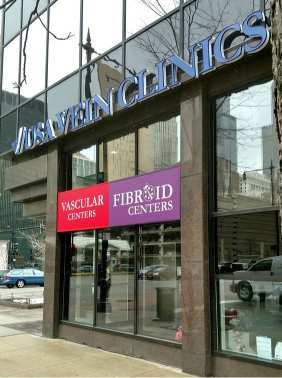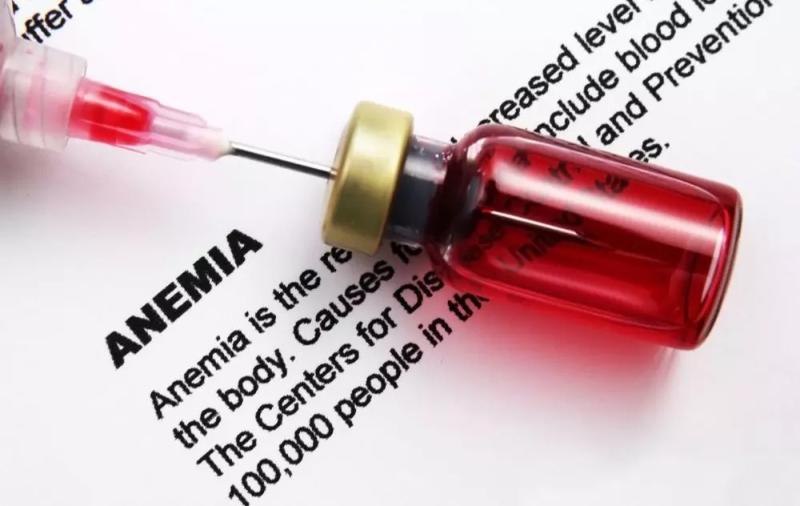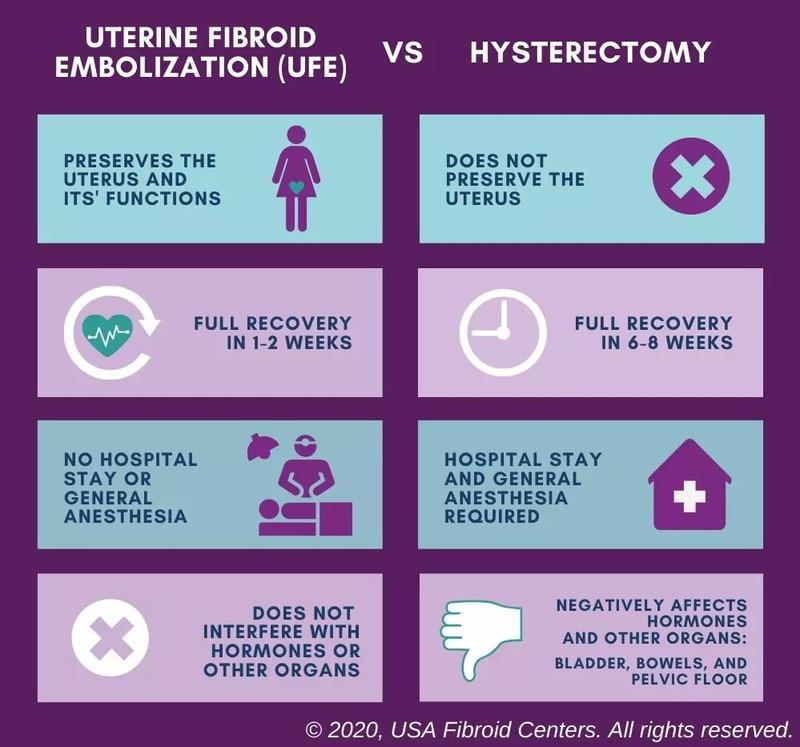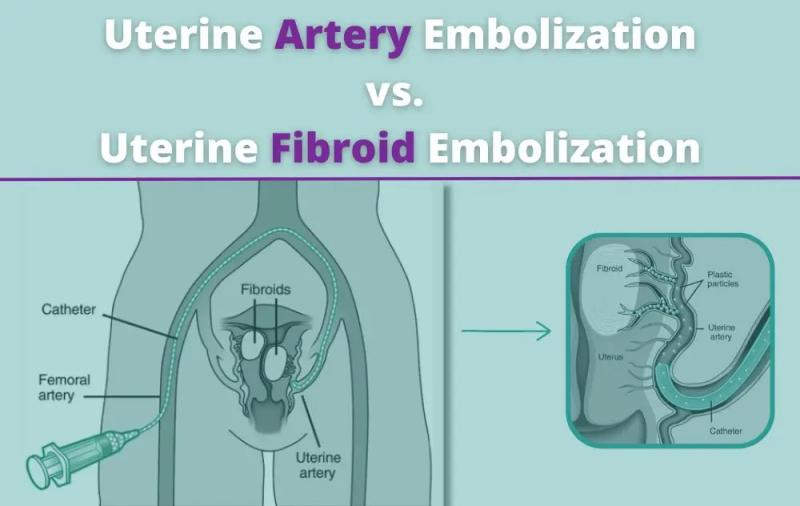UAE vs UFE: Minimally Invasive Solutions for Uterine Health

When dealing with uterine fibroids, patients often seek effective,
minimally invasive treatments to improve their quality of life. Two commonly
discussed options are Uterine Artery Embolization (UAE) and Uterine Fibroid
Embolization (UFE). If you’ve come across both terms and are wondering how they
differ, you’re not alone. In this article, we’ll delve into the similarities
and distinctions between UAE and UFE, helping you make an informed decision on
your treatment.
What are UAE and UFE?
Both Uterine Artery Embolization (UAE) and Uterine Fibroid
Embolization (UFE) are minimally invasive procedures designed to block the
blood flow to certain areas of the uterus. By cutting off the blood supply, the
targeted tissue, typically uterine fibroids, shrinks and eventually dies. The
primary goal of both procedures is to reduce fibroid-related symptoms such as
heavy menstrual bleeding, pelvic pain, and pressure.
The terms UAE and UFE are often used interchangeably because of
their close similarity. However, there are key differences that make each
method unique.
UAE vs. UFE: The Differences
While UAE and UFE share a similar goal, they have a few distinct
differences, particularly regarding the scope of their application and the
specifics of the procedure:
Target Area
UAE is a broader term that refers to blocking the blood supply to
the uterus in general. It can be used for various conditions beyond fibroids,
including postpartum hemorrhaging and other non-fibroid-related uterine issues.
UFE, on the other hand, is a more specialized procedure focused
specifically on treating uterine fibroids. By directly targeting the arteries
supplying the fibroids, UFE offers a more fibroid-focused approach.
Procedure Focus
In UAE, the embolization targets all arteries supplying blood to
the uterus. It isn’t as targeted as UFE, which narrows its focus specifically
to the fibroids.
In UFE, only the arteries feeding the fibroids are embolized,
sparing more of the surrounding healthy uterine tissue. This targeted approach
can lead to fewer side effects and a quicker recovery time for patients.
Treatment Versatility
UAE can be applied to treat a variety of conditions, such as
postpartum hemorrhage or adenomyosis, not just fibroids.
UFE, however, is exclusively for treating uterine fibroids and
their symptoms.
Who Can Benefit from UAE and UFE?
Women suffering from fibroid symptoms such as abnormal uterine
bleeding, pain, or an enlarged uterus may consider either UAE or UFE. However, UFE
is particularly suited for patients looking for a more fibroid-focused
treatment.
UAE, while still an option for fibroid sufferers, is often used
for broader uterine conditions. Your physician may recommend UAE for conditions
like uncontrolled bleeding post-childbirth or in cases where fibroid-specific
treatment isn’t the main concern.
How Do the Procedures Work?
Both UAE and UFE use similar techniques. The procedures typically
involve the following steps:
Minimally Invasive
Both procedures are performed by interventional radiologists. A
small catheter is inserted into the groin or wrist area and guided through the
blood vessels leading to the uterine arteries.
Through the catheter, small particles are injected to block the
blood flow to the target area.
Post-Procedure
Once the blood supply is cut off, the fibroid tissue will shrink
over the next few months, resulting in symptom relief.
Patients may experience mild discomfort, cramping, or flu-like
symptoms for a few days after the procedure.
Recovery Time
Recovery for both UAE and UFE is relatively short compared to
traditional surgery. Patients are usually discharged the same day or after a
short hospital stay. Most women can return to normal activities within 1-2
weeks.
Success Rates and Outcomes
Both procedures are highly successful for reducing symptoms of
fibroids. Clinical studies have shown that over 85% of women who undergo UFE
report significant improvement in fibroid symptoms, with similar results
reported for UAE.
However, because UFE is specifically designed to treat fibroids,
it may offer a slight edge for fibroid symptom relief compared to UAE. Women
undergoing UFE often experience fewer complications related to non-fibroid
uterine tissue since the embolization is more targeted.
UAE
vs. UFE: Side Effects and Risks
While UAE and UFE are generally considered safe, both procedures
carry some risks:
Pain and Cramping: After the procedure, most women experience
moderate to severe cramping, particularly in the first 24 hours.
Post-Embolization Syndrome: This includes flu-like symptoms such
as fever, fatigue, and discomfort. It usually resolves within a few days.
Infection: As with any medical procedure, there is a small risk of
infection, which can be treated with antibiotics.
Amenorrhea (Absence of Menstruation): Some women may experience
temporary or permanent cessation of menstruation, especially if they are close
to menopause.
It’s important to discuss your medical history and concerns with
your physician before deciding which procedure is right for you.
Which Procedure is Right for You?
Choosing between UAE and UFE depends on your specific condition
and treatment goals. Here are some factors to consider:
Fibroid-Specific Treatment: If your primary concern is
fibroid-related symptoms, UFE may be the better choice since it specifically
targets the fibroids.
Other Uterine Conditions: If you are dealing with other uterine
conditions beyond fibroids, such as postpartum bleeding or adenomyosis, UAE may
be a more versatile option.
Desire for Fertility Preservation: While both procedures preserve
the uterus, UFE is considered more targeted and less likely to affect
surrounding tissue, which could make it a more suitable option for women
interested in preserving fertility.
Final Thoughts on UAE vs. UFE
While UAE and UFE are closely related procedures, they serve
slightly different purposes. UAE is a broader procedure applicable to various
uterine conditions, while UFE is specialized to treat fibroids. If you’re
considering one of these treatments, your decision should be guided by your
medical condition and personal preferences.








Comments